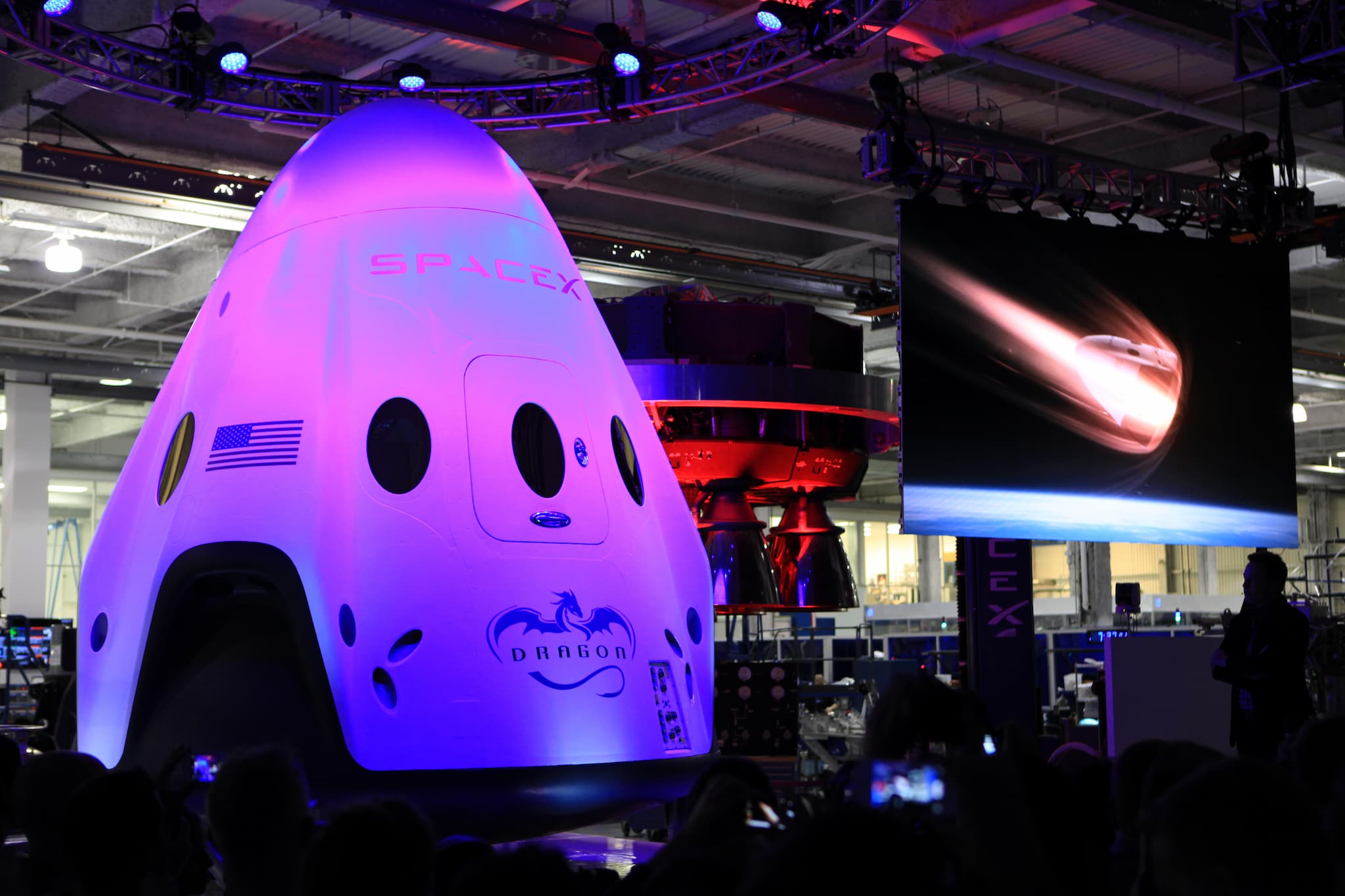At the Space Exploration Technologies (SpaceX) headquarters in Hawthorne, CA, CEO Elon Musk gave an audience of employees, journalists, as well as aerospace industy leaders a peek at what he hopes will be the future transportation system carrying astronauts to and from the International Space Station (ISS).
Musk said "we wanted to take a big step in technology. It really takes things to the next level."
Before the big unveiling, the crowd watched a short fast-moving, animated video depicting the capsule blasting off into orbit, zooming to the space station, docking and returning to Earth, eventually making a soft landing under its own power. Musk boasts that this is how a 21st century ship should land and that the new vehicle will be able to land anywhere with the same accuracy as a helicopter.
The new spacecraft, named Dragon V2, is designed to carry up to seven astronauts and is fully reusable. This is a huge factor as it will help keep the costs down.
"As long as we continue to throw away rockets and spacecraft, we will never truly have access to space," Musk explained. "It will always be incredibly expensive."
To put it in perspective, imagine how expensive air travel would be if we threw away every commercial jetliner after every flight. Only the incredibly wealthy would be able to afford it.
Since 2011, NASA has been relying on Russia to transport astronauts to and from the ISS with each seat costing the American government approximately $71 million. Recent events have put a strain on the U.S.'s relationship with Russia. Russian Deputy Prime Minister, Dmitry Rogozin, recently suggested that Russia's cooperation with the U.S. might end as early as 2017.
After the shuttle program's retirement three years ago, NASA has been working with its commercial crew partners to develop America's next great spacecraft. SpaceX, Sierra Nevada Corporation, Boeing and Blue Origin are among the contenders hoping it will be their vehicle carrying astronauts to and from low-Earth orbit.
SpaceX has already achieved a huge milestone with V2's predecessor the Dragon V1 capsule. The first Dragon completed its first test in 2011, when an empty capsule lifted off from Earth, docked with the ISS and returned to Earth - a feat previously only completed by government corporations. Since its inaugural launch, Dragon as completed three successful resupply missions with a fourth scheduled for this summer as part of a $1.6 billion contract SpaceX has with NASA for a grand total of 12 resupply missions.
Based on its accomplishments, SpaceX has won additional NASA contracts totaling over $500 million for the development of astronaut-ready hardware, like the V2. The upgraded Dragon capsule is a sleek, modernized and simply designed spacecraft. All of the Dragon capsules and Falcon 9 rockets are manufactured in a Hawthorne facility where Boeing 747 fuselage sections were once made.
V2 will be tall enough to carry eight rocket engines, arranged in pairs, four landing legs, and a docking port concealed by a flip-out nose cone. Unlike V1, which needs the help of the Canadarm2 to berth to the ISS, V2 will be able to autonomously dock to the station all on its own.
Each Dragon V2 will be equipped with two SuperDraco engines, packing 16,000 pounds of thrust, allowing each capsule to land safely. During landing if one of the engines stops working, the craft will still be able to land itself; in the event of a complete engine failure, parachutes will deploy.
SpaceX really prides themselves on design and manufacturing advancements and strives to deliver the best quality product and the lowest possible price. The Dragon V2 is the first rocket to contain printed parts as the vehicle's SuperDraco engines are produced entirely with a 3D printer.
The new Dragon V2 spacecraft could make its first unmanned test flight at the end of next year, with its first manned test flight slated for mid 2016.
Want to see the new V2 in action? Make sure you watch the video below.
Share This Article
